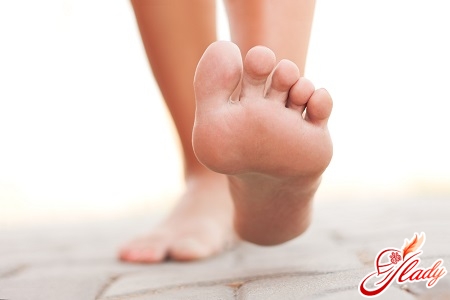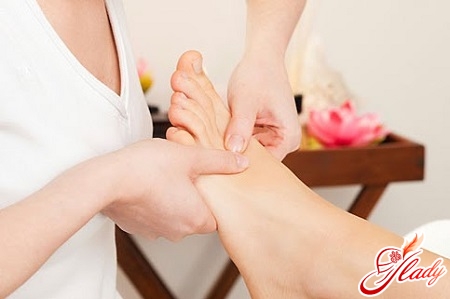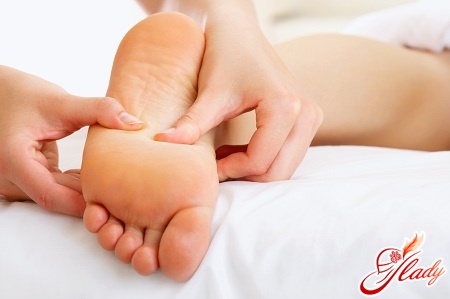
Valgus deformity of the big toe isfamiliar to many and quite unpleasant disease, when the side of the foot begins to appear build-up, accompanied by soreness. From a medical point of view, deformation of the bones of the finger occurs beyond the limit of the foot, that is, the metatarsal bone moves away from the other fingers to the side. This requires a long, complex treatment, since otherwise inflammations, pain when walking, are possible.
The causes of deformities of the foot: where does the ailment come from?
The reasons for the deformation of the thumb are the mostdifferent, most often it is pathological pressure on the area of the thumb, wearing incorrectly selected, tight shoes, high heels that do not give the leg loads to distribute correctly. Often subject to such a disease, professional ballerinas and dancers, the gene factor is of great importance. Completely determine the degree of curvature is possible only with the radiography of the foot. It is often recommended to perform an ultrasound examination that will show whether there is a violation of the blood circulation of the site, whether any additional measures for treatment are needed. 
Treatment: from physiotherapy to surgery
Treatment of valgus deformity always begins withselection of shoes, which should not cause inconvenience when worn, can stop the progression of deformation. Often painful sensations are caused by the fact that shoes simply do not fit with this disease, squeezes the foot, provokes inflammatory processes. There are special orthopedic products that help reduce the pressure on the bursa of the finger, pads, spacers that help to splint the finger, remove the load on the foot. But such treatment only helps to remove the inflammation and remove soreness, the build-up still remains, so often after this, a surgical intervention is prescribed. Medicamental treatment is an injection of corticosteroids, which can remove the inflammatory process. That is, with the help of specially selected drugs, you can reduce soreness in walking, remove inflammation, but you can not get rid of the build-up itself. Often injections are prescribed before surgery to remove bursitis. A valgus foot defect can be treated in a variety of ways, but the most commonly prescribed surgical intervention. The main tasks in this treatment are as follows:
- removal of bursitis of the thumb;
- reconstruction of the bone, its position relative to the remaining bones of the feet;
- balancing the muscles around the joint in such a way that the deformation does not repeat.
Most often in very difficult cases, either stronglythe bulging cone (that is, when the curvature is maximal) it is recommended to remove the built-up edge. Such removal is carried out as follows: the skin on the leg in the area of the build-up is cut, after which the build-up itself is removed with the help of a surgical chisel. The incision on the skin is sewn with small stitches. Such an operation is performed in the case when bursitis is already observed. In some cases, additional bone reconstruction is required, returning the normal angle. After the operation, a rehabilitation period is needed, during which a bed rest is recommended, and there are no loads on the diseased leg.
Distal and proximal osteotomy
In some cases it is necessary to cutdistal end of bone. This allows you to reduce the angle between metatarsal bones. The operation requires only a few small incisions, all bones, after obtaining a satisfactory position, are fastened with metal pins that are removed three to six weeks after the operation. Loads after surgery are not recommended, it is necessary to observe the rehabilitation period, to follow the recommendations of the treating doctor. Such surgical intervention is performed in this way: the metatarsal first bone is cut at the proximal end, then the bone is reconstructed and fixed in the required position with the help of metal pins. Such a surgical intervention can reduce the angle between the metatarsal bones of the foot, during the operation, the muscle tendons are relieved, which drives the thumb. After surgery, a special bandage is worn on the foot. Such intervention is considered relatively sparing, the rehabilitation period does not take much time, but still the doctor's recommendations, bed rest should be observed exactly. 
Rehabilitation period: how fast can you recover from surgery?
The operation is performed under general anesthesia, afterAn extremely dense, elastic bandage is superimposed on the foot, the foot must be correctly fixed. You can move your toes only on the second day after the operation, you can lower your legs from the bed on the third day, and you can walk (that is, load the operated leg) only ten days after the operation. Full load on the foot is allowed a month after the operation, strict bed rest is needed. All recommendations and prescriptions should be observed in accuracy, since the proper healing depends on this. The entire rehabilitation period takes at least six months, at this time, physical activity, exercise, walking on his heels is strictly contraindicated. To prevent the re-development of this disease, it is necessary to wear special shoes with orthopedic insoles. On average, the healing of the leg after the operation takes about eight weeks, at this time the foot should be fixed by means of a bandage, which does not allow the foot to be injured. In very difficult cases, after a surgical intervention, some period of time will have to be moved with crutches. With a pronounced bursitis in the postoperative period, physiotherapy is prescribed, shoes should be worn only with an extended front, use correctors. Compliance with such conditions will shorten the rehabilitation period, avoid the recurrence of the disease. 
Contraindications and possible complications
Surgical intervention can be carried out not inall cases. So, the presence of local inflammatory processes is the main contraindication for the operation. It is impossible to perform surgical interventions if thrombophlebitis is present, pronounced swelling, for women - during menstruation. In each individual case, the treatment regimen for valgus deformity of the foot is prescribed strictly individually in accordance with the general state of health, the degree of the disease, the presence of contraindications to this or that method of combating the disease. After the operation, it is necessary to strictly follow the regimen prescribed by the attending physician, otherwise various complications may arise, which is fraught with inflammation, severe pain. As with any surgery, complications are possible after the operation on the foot. Usually it is hematomas, inflammatory processes in the area of the thumb, but it can be avoided quite easily, simply following the recommendations of the doctor. After the operation, it is necessary to follow the treatment regimen, not to burden the leg. In the first days after surgery in the field of the metatarsophalangeal joint, pain can be observed, depending on the individual characteristics of the patient's body, scars can form. Ugly shisha against orthopedic shoes Many of us have faced such an unpleasant phenomenon when the thumb of the foot first starts to hurt, and then laterally appears a protruding bone. This phenomenon - one of the most common, it is a manifestation of transverse flatfoot. The progressive disease provokes a displacement of the metatarsal head, that is, the so-called deviation of the big toe from the others occurs. At this time, on the foot of the side, an ugly cone is formed, which causes a lot of inconvenience: from painful sensations when walking to inflammation, unaesthetic appearance. The most common treatment that is prescribed for valgus deformity is the use of special footwear, but physiotherapy methods are often prescribed, in particularly difficult cases, surgical intervention is performed.









